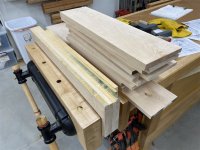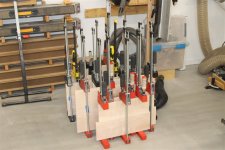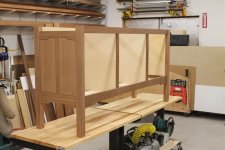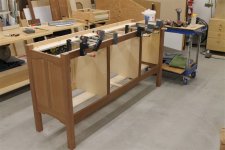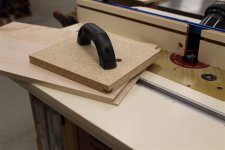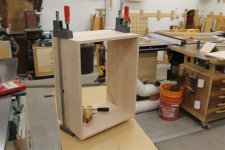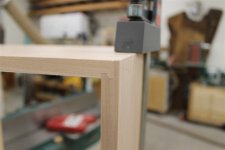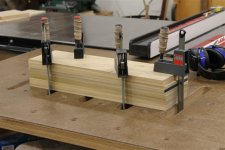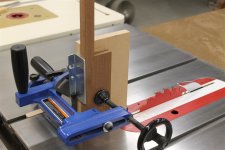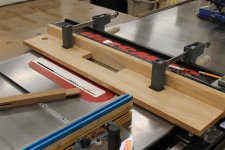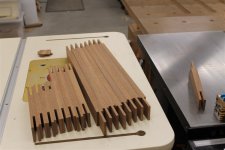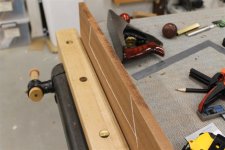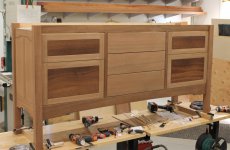glenn bradley
Member
- Messages
- 11,542
- Location
- SoCal
I've reached a phase where you work all day and it looks like nothing happened  . I glued up the front frame.
. I glued up the front frame.

I over-looked or over-glued one joint and was disappointed to find this.

I tried to channel Toni and carve my way out of it. I think I can work with this.

I was mentally struggling on how to process the glue up of the front and back frame subassemblies to each other. I realized I could use pocket hole screws as clamps instead of actual clamps for the divider panels.

This let me do the glue up on the bench. The side panels are dry fit with tenons in place. My primary focus here is true and square for the internal structure, front, and rear frames.
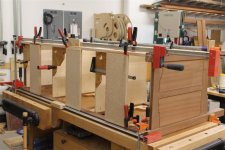
Like I said. All that work and you can't see a thing.

I over-looked or over-glued one joint and was disappointed to find this.

I tried to channel Toni and carve my way out of it. I think I can work with this.

I was mentally struggling on how to process the glue up of the front and back frame subassemblies to each other. I realized I could use pocket hole screws as clamps instead of actual clamps for the divider panels.

This let me do the glue up on the bench. The side panels are dry fit with tenons in place. My primary focus here is true and square for the internal structure, front, and rear frames.

Like I said. All that work and you can't see a thing.


